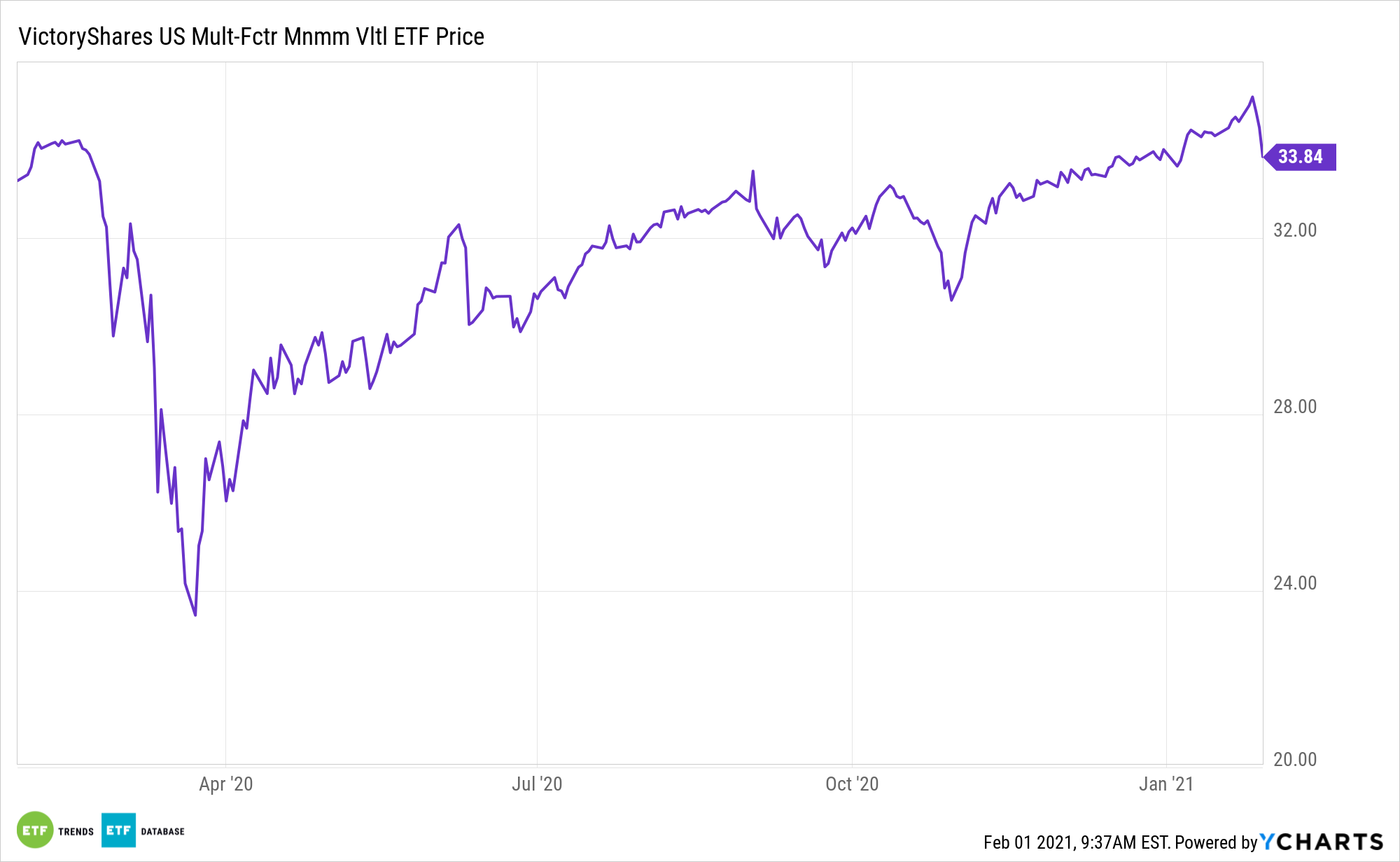Amid all the commotion in GameStop and other heavily shorted stocks last week, equity market volatility jumped. Low volatility exchange traded funds responded, trading less poorly than the S&P 500.
It’s just one week, but it serves as a reminder of the benefits of ETFs such as the VictoryShares US Multi-Factor Minimum Volatility ETF (VSMV).
VSMV follows the Nasdaq Victory US Multi-Factor Minimum Volatility Index, providing the fund with a potentially superior mousetrap than simply owning a basket of the lowest volatility equities – an approach that has plenty of drawbacks. What makes VSMV appealing relative to older, competing strategies is that it focuses on factors beyond low volatility.

VSMV: A Better Way to Low Volatility
VSMV starts with a universe of mid- and large-cap U.S. companies taken from the Nasdaq US Large Mid Cap Index and then ranking the companies using a number of proprietary fundamental factors like dividend yield, sales growth, and other financial metrics identified by a quantitative multi-factor selection process to identify those most likely to outperform the broader market. Furthermore, the underlying index uses an optimization tool to weight individual securities to minimize absolute volatility.
A low volatility strategy is a boon when it comes to staving off a market downturn like the forgettable one seen during the height of the pandemic sell-offs in March. Given their ability to mute market noise during massive sell-offs, it might seem like the go-to for investors
Low-volatility ETFs are factor-based strategies that tilt toward companies with a propensity for lower volatility. Different issuers and index providers arrive at a basket of low volatility stocks in varying fashions. Historical data confirm that over long holding periods, the low volatility factor is rewarding for investors.
Low-volatility factor investments work on the idea that they help cushion against market turns, limiting drawdowns that investors experience while simultaneously providing upside potential. Consequently, strategies with low or medium volatility may produce better risk-adjusted returns over the long haul.
By focusing on a multi-factor approach, VSMV can home in on holdings that exhibit the right factor exposures, such as quality, momentum, and profitability, but, compared to other products, also take into consideration valuation. This approach helps, particularly when traditional low volatility sectors and stocks are frequently ‘bid up’ by the market.
For more on innovative portfolio ideas, visit our Nasdaq Portfolio Solutions Channel.
The opinions and forecasts expressed herein are solely those of Tom Lydon, and may not actually come to pass. Information on this site should not be used or construed as an offer to sell, a solicitation of an offer to buy, or a recommendation for any product.

